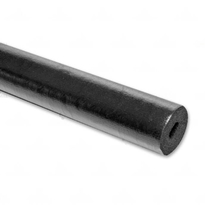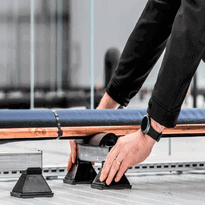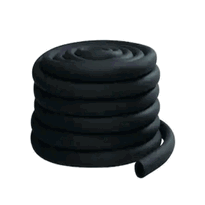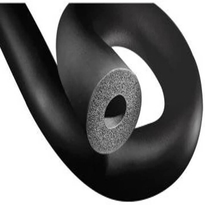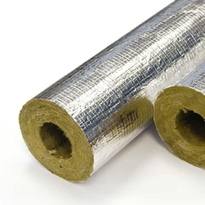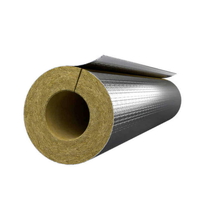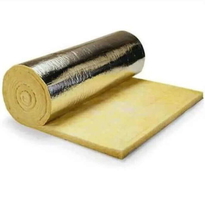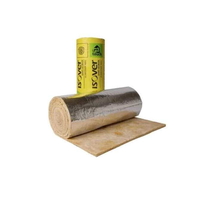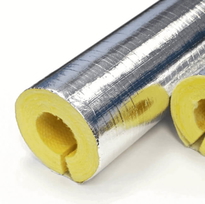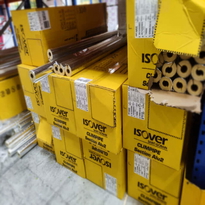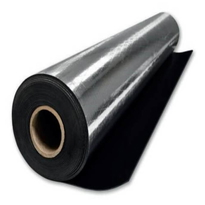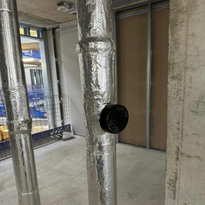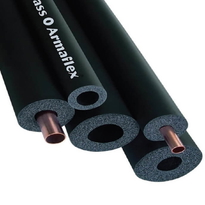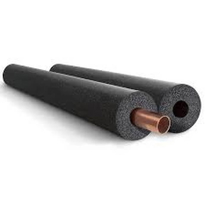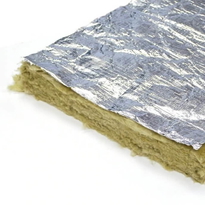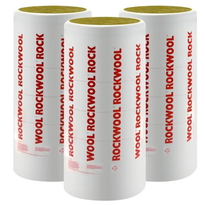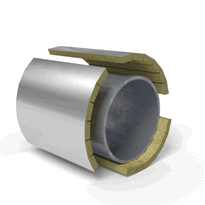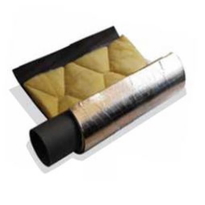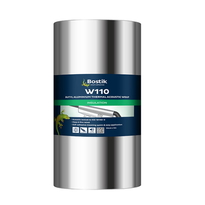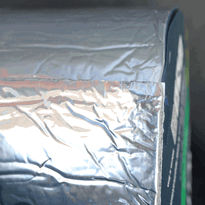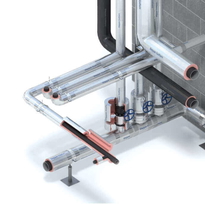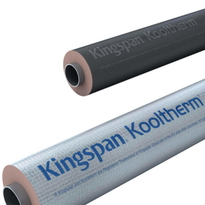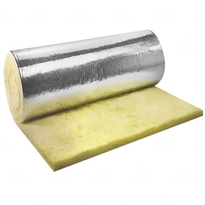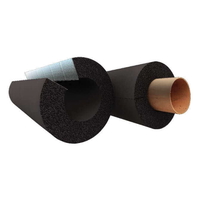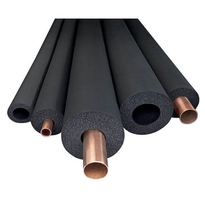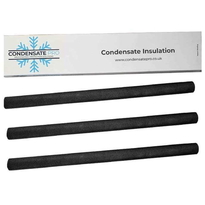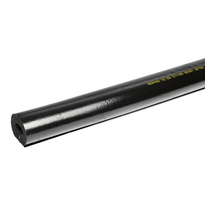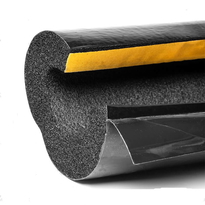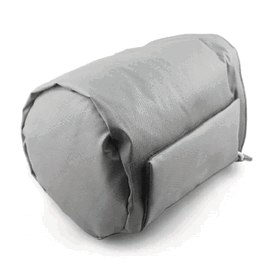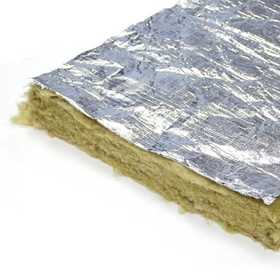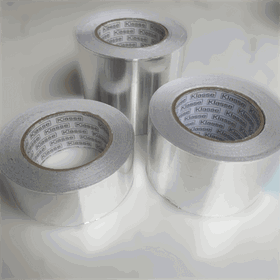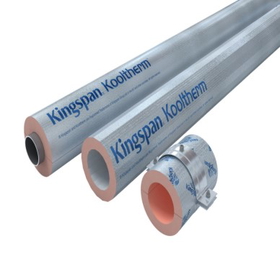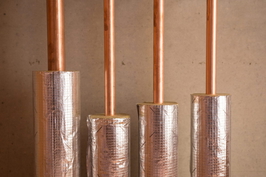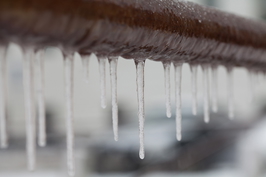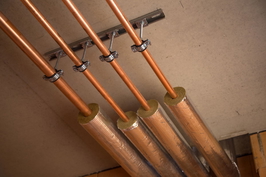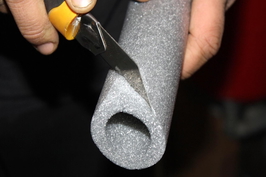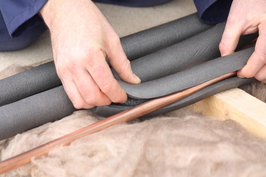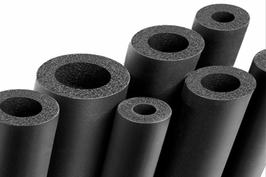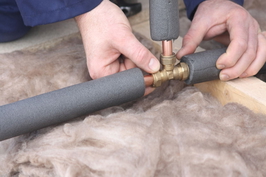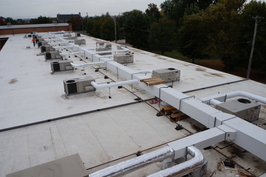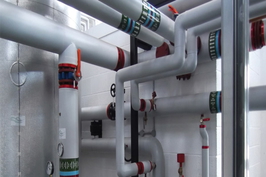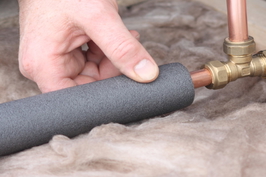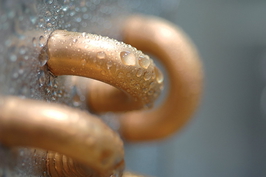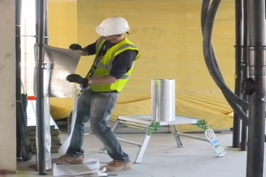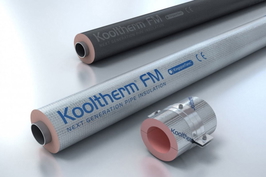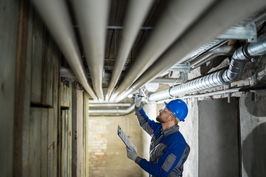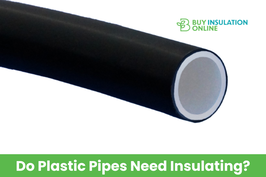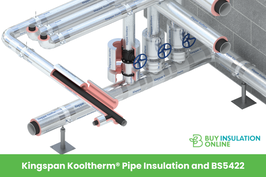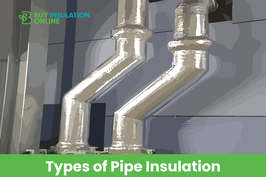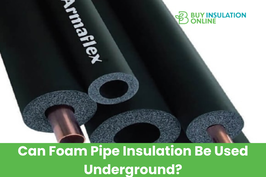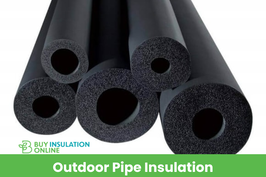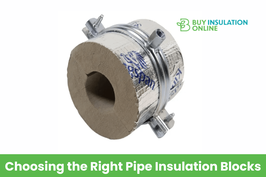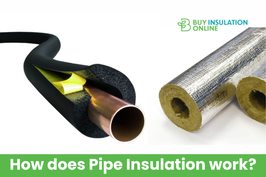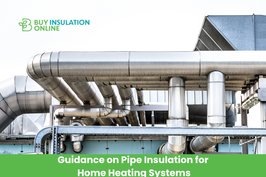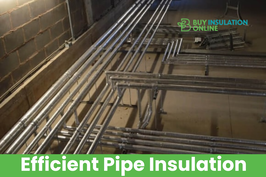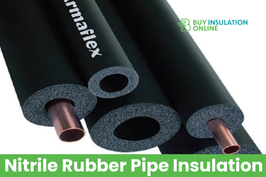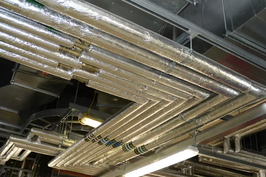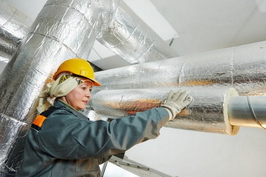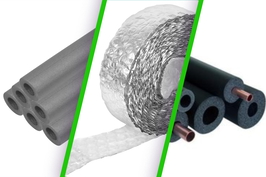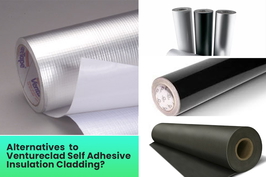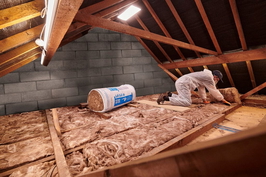Pipe Insulation
We have a straight off-the-shelf stock of popular materials such as mineral wool, Fibreglass, Nitrile and Phenolic foam all made by big brand names such as Rockwool, Isover, Paroc and Kingspan. Whatever you can't find on our website, we can find it for you offline via our network of special suppliers.
We stock a huge variety of pipe lagging in various sizes to suit any application. Whether you're looking for pipe insulation to prevent frozen pipes in the winter, prevent heat loss from hot pipes or need to soundproof your plumbing, we have the perfect insulation solution for you.
We can ship the next day across the mainland UK, so no matter where you are, we can get the insulation for your pipes to you quickly and easily. If you're not sure which product is right for you, our team of experts is always on hand to offer advice and guidance.
We are experts in our niche and can give sound advice on pipe lagging, should you ever need it. You can always contact us if you are unsure about the size or thickness of the pipe lagging you need or require more information on the products.
We will have pipe insulation and supplies delivered to you in 2-3 working days (estimated). We deliver throughout the mainland UK. We also offer free delivery on pipe insulation for select postcodes (usually in main cities) or a flat £20 delivery on orders below £275 on select products.
Click here to learn more about our free delivery terms. We have high-quality pipe insulation for any category you can think of, suitable for all applications.
We also allow the customer to click and collect for free, with no minimum order amount from our many depots around the UK.
Feel free to contact us for any assistance you may need. Just email us your queries or reach out to us on the phone, WhatsApp or chat with us and we will help you choose the right insulation you require.
Similar Categories
Buy Pipe Insulation Online
Looking for Pipe Insulation Suppliers?
If you are looking for reliable pipe insulation suppliers in the UK, then look no further. We have a wide variety of the best pipe insulation from the leading manufacturers in the UK and Europe.
At Buy Insulation Online, we go above and beyond to make your shopping experience as smooth and hassle-free as possible.
We are experts in our niche and can give sound advice when it comes to pipe lagging, should you ever need it. You can always contact us if you are unsure about the size or thickness of the pipe lagging you need or require more information on the products.
We can get pipe insulation delivered to you in 1-3 working days (estimated). If given enough notice early enough in the day we can usually deliver the next working day to the main urban areas of the UK.
With deliveries throughout the mainland UK, you can enjoy Free Delivery for select postcodes (usually in main cities) or a flat £20 delivery on orders below £275 on select products. Click here to learn more about our free delivery terms.
We also allow customers to click and collect for free, with no minimum order amount from our many depots around the UK.
Why Choose Us?
We believe we are the best supplier of pipe lagging in the UK with the widest choice and widest coverage. Not only that but see some of the other great reasons to shop with us below -
Eco-Conscious
Our unique selling proposition is that we are an environmentally friendly insulation merchant. For every order we take, we plant 1 brand new tree and protect 10 existing ones in the Amazon rainforest. Doing this should easily offset any carbon that is produced during the manufacture and logistics of moving the product around during its lifespan.
Only Quality Products
Our products are rigorously tested to ensure that they meet industry standards and that they provide superior performance, durability and safety.
Staff with hands-on experience
Our experienced team of customer support staff will provide you with the necessary advice and guidance about installation and maintenance to ensure that your finished project looks great and performs optimally.
Feel free to contact us for any assistance you may need. Just email us your queries or reach out to us on the phone, WhatsApp or chat with us and we will help you choose the right insulation you require.
Competitively Priced
Our competitive prices guarantee true value for money when it comes to purchasing pipe insulation materials.
The Go-to Pipe Lagging Experts
We as a company have actual hands-on experience in not only supplying but also installing pipe insulation. We are a bit geeky when it comes to pipe lagging, that's how we have been able to compile a comprehensive wiki of sorts all about pipe insulation.
Everything you would ever need to know about pipe insulation can be found on this page and our associated blog posts.
We will learn about its importance, history, different types of insulation materials, installation methods, key considerations for selecting the right insulation, and the benefits it brings to residential, commercial, and industrial applications.
Whether you're dealing with hot water, heating, chilled water systems, or even soil and vent pipes, properly insulated pipes can enhance their performance and longevity.
On this page, we will go into the importance of pipe insulation, different types of insulation materials, installation methods, key considerations for selecting the right insulation, and the benefits it brings to residential, commercial, and industrial applications.
Pipe Lagging Wiki
Pipe insulation is a crucial aspect of maintaining energy efficiency, reducing heat loss, and protecting pipes from external factors. We have compiled a comprehensive wiki of sorts all about pipe insulation. Everything you would ever need to know about pipe insulation can be found on this page.
We will delve into the importance of pipe insulation, its history, different types of insulation materials, installation methods, key considerations for selecting the right insulation, and the benefits it brings to residential, commercial, and industrial applications. Whether you're dealing with hot water, heating, chilled water systems, or even soil and vent pipes, proper pipe insulation can enhance its performance and longevity.
More Resources For Pipe Insulation Education
You can see some videos we have made on pipe insulation on our Youtube Channel here - Everything You Need To Know About Phenolic Pipe Insulation / Why You Need Pipe Insulation? / 10 Things To Consider When Choosing Pipe Insulation Thickness / Insulate Pipes To Stop The Spread Of Legionnaires Disease / All You Need To Know About Pipe Insulation Cladding
We have also written extensive articles on the subject which you can find here - Pipe Insulation Articles
Chilled Water Pipe Insulation - A Brief Guide / Everything You Need To Know About Phenolic Pipe Insulation / Soil Pipe Insulation: A Step-By-Step Guide / Tips On Preventing Condensation On Pipes / What Is Pipe Lagging? A Short Buyers Guide / Which Is The Right Pipe Lagging For You? / Insulate Pipes To Stop The Spread Of Legionnaires' Disease / Why You Need Pipe Insulation? / Benefits Of Using Nitrile Rubber Pipe Insulation / Why Pipe Insulation In Your Loft And Other Cold Spaces Is A Must. / How To Install Pipe Insulation Yourself? / 10 Things To Consider When Choosing Pipe Insulation Thickness / Are Your Pipes Winter- Ready? / Why Is Pipe Insulation Important?
Take a look at some UK pipe insulation manufacturer's official websites below
https://www.kingspan.com/gb/en/products/hvac-insulation/pipe-insulation/kooltherm-pipe-insulation/
https://local.armacell.com/en/armacell-uk/products/afarmaflex-class-o/
https://www.isover-technical-insulation.com/hvac-pipe-insulation
What is Pipe Insulation?
Pipe insulation, also known as lagging, refers to the process of wrapping pipes with a layer of insulating material to minimise heat transfer and maintain the desired temperature of the fluid flowing through them.
It acts as a protective barrier that prevents heat loss or gain, controls condensation, and reduces energy consumption. Insulation also helps to enhance the overall efficiency and performance of pipework, ensuring that systems operate optimally.
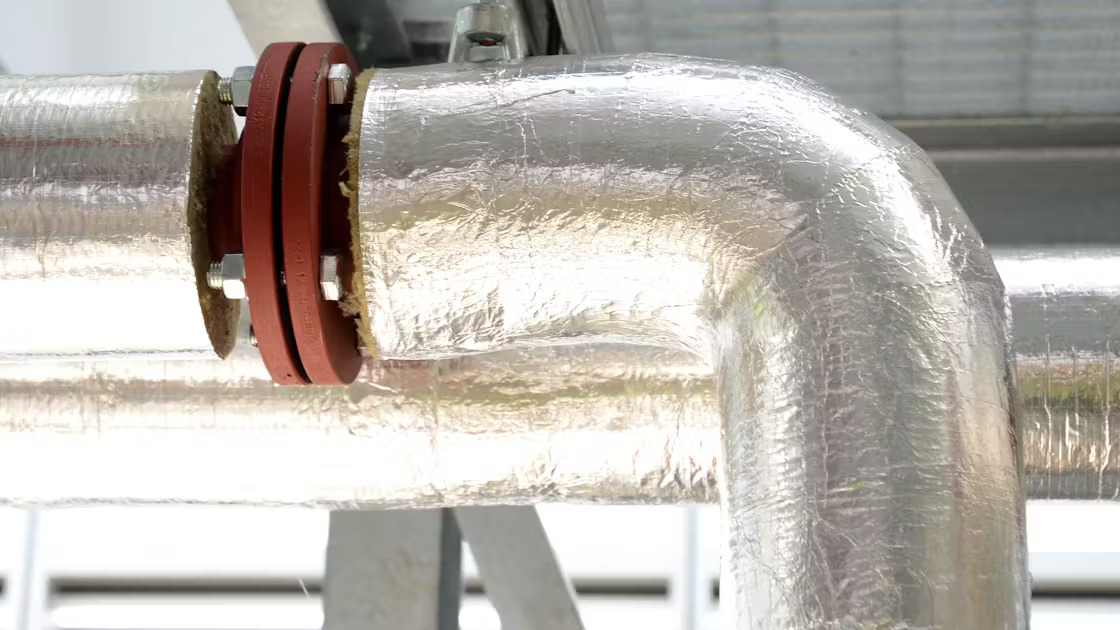
A quick History of Pipe Insulation
The history of pipe insulation dates back many centuries and traces its origins from different communities across the globe, though its usage became more prevalent during the Industrial Revolution. As with many early innovations, the need for thermal insulation arose out of necessity.
The adoption by engineers of inventing protective layers to insulate pipes was aimed at addressing steam losses, enhancing efficiency, and improving safety in factories.
Here's a brief overview of the history of pipe insulation:
-
Ancient Times: The earliest known form of pipe insulation can be traced back to ancient Rome, around 1000 B.C. Romans used materials like straw, reeds, and animal skins to insulate their water pipes and aqueducts. These materials helped prevent heat loss and protected the water supply from freezing during winters.
-
Industrial Revolution: The Industrial Revolution in the 18th and 19th centuries brought advancements in manufacturing and technology, including the development of steam-powered engines and the expansion of industrial infrastructure. With the rise of steam-based systems, insulation became vital to prevent heat loss and ensure energy efficiency. Materials such as cork, mineral wool, and asbestos were commonly used during this period.
-
Asbestos Era: In the late 19th and early 20th centuries, asbestos emerged as a popular material for pipe insulation due to its excellent insulating properties and fire resistance. It was widely used in industrial settings, shipbuilding, and residential construction. However, the health risks associated with asbestos exposure became known later, leading to its phased-out use.
-
Modern Materials: In the mid-20th century, alternative materials began to replace asbestos due to health concerns. Fiberglass insulation became a popular choice for pipe insulation due to its thermal resistance, affordability, and ease of installation. Other materials like foam insulation such as polyethylene and elastomeric rubber insulation also gained popularity for their insulating properties.
The modern era of pipe insulation is a testimony to technological advancement and innovation, with the development and utilisation of advanced pipe insulation lagging materials such as aerogel, calcium silicate and phenolic foam insulation for pipes, offering enhanced efficiency and safety.
Which pipes require insulation?
All the water pipes in your home should be insulated, even the cold ones. After lagging hot water pipes, you enjoy a warm shower even on a cold day.
It prevents heat loss and keeps water about 2 degrees warmer than it would be otherwise. It also helps in long-term cost and energy savings.
When pipe lagging of the appropriate thickness is used to insulate cold water pipes, it prevents issues like pipe freezing and pipe bursts.
Frozen pipes are costly issues to resolve when they burst as they can lead to extensive structural and furniture damage in your home.
Pipe insulation for outside pipes is an essential requirement and also for those situated in unheated areas of your building, where the temperatures drop below zero.
Here is a list of common pipes that require insulation;
| Category | Pipes | Materials Used | Insulation Materials |
| Water Supply and Distribution | Cold Water Pipes, Hot Water Pipes, Refrigeration Pipes, Solar Water Heater Pipes, Outdoor Pipes, Central Heating Pipes, Chilled Water Pipes, Underground Pipes, Condenser Water Pipes | Copper, PEX, PVC, CPVC | Foam Rubber, Fiberglass, Polyethylene Foam |
| eating and Cooling Systems | Steam Pipe Insulation, Boiler Pipes, Heat Pump Pipes, Radiator Pipes, Geothermal System Pipes, Sprinkler System Pipes | Copper, Steel, PEX, Insulated Pipes | Mineral Wool, Foam Glass, Elastomeric Foam |
| Plumbing and Waste Management | Plumbing Pipes, Sewage Pipes, Drain Pipes, Waste Pipes, CPVC Pipes, PEX Pipes | PVC, CPVC, Cast Iron, PEX | Not typically insulated |
| Industrial and Chemical | Industrial Process Pipes, Chemical Transporting Pipes, High-Temperature Exhaust Pipes, Cryogenic Liquid Transport Lines, Beverage and Food Grade Lines | Steel, Stainless Steel, Nickel Alloy, HDPE | Ceramic Fiber, Aerogel, Polyurethane Foam |
| Gas and Oil | Gas Lines (Where protection is required), Oil Transporting Pipes, Fuel Oil Lines | Steel, PE (Polyethylene), Copper | Foam Glass, Polyurethane, Cellular Glass |
| Infrastructure and Construction | Copper Pipe Insulation, PVC Pipes, Steel Pipework, Cast Iron Pipes, Condensate Lines | Copper, PVC, Steel, Cast Iron | Foam Rubber, Fiberglass, Polyethylene Foam |
| HVAC and Refrigeration | Air Conditioning Lines / AC Pipes, DX (Direct Expansion) Pipes, VRF (Variable Refrigerant Flow) Pipes, Heat Pump Refrigerant Pipes, Condensate Drain Pipes, Air Conditioning Refrigerant Pipes, Heat Pump Refrigerant Lines | Copper, Aluminum, Insulated Rubber or Polyethylene | Elastomeric Foam, Polyethylene Foam, Insulated Rubber |
What is the best pipe lagging for my project?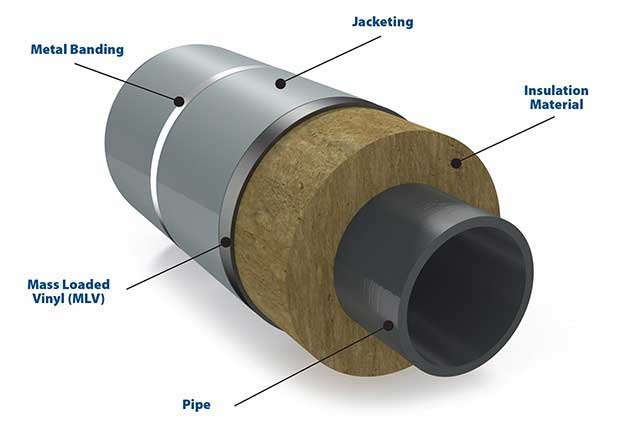
It depends on what you're trying to achieve, is the pipe hot or cold? is it for thermal or acoustic insulation? Is it external pipe insulation you require? However, for general rules of thumb, you could go with the below suggestions
Best Pipe Lagging for Thermal Performance
Choose Phenolic Insulation. This has the lowest thermal conductivity of all insulating materials, reducing heat loss and energy consumption.
Best Acoustic Pipe Insulation for Soundproofing
Choose Rockwool. This has the best soundproofing attributes among the readily available options.
Best Value for Money
To get the most value for money, choose Armaflex Pipe Insulation. Made from elastomeric nitrile rubber, they are cheap to buy and give a decent amount of thermal insulation. However beware that if thicker thicknesses are required then nitrile rubber ceases to be cheap beyond 13mm thickness. At this point you are better choosing a product like Kingspan.
Easiest to Install
Choose Armacell Tubolit. This foam insulation is easy to install as it just snaps onto the pipe however it can mean there are many gaps which allow heat to escape or enter, not great if you're using it as hot water pipe insulation for example.
You will need to ensure that the entire length of the insulation is completely sealed using appropriate pipe lagging tape or duct tape.
Types of Pipe Insulation Material We Offer
The top Brands we stock are Isover, Rockwool, Kingspan and Armaflex insulation. Other brands we keep small stocks of and can procure more of on request are Knauf, Supaphen and Paroc.
All the pipe wraps we sell are Class 0 rated to help prevent the spread of flame.
By far the most common sizes are 15mm and 22mm pipe insulation as these are the sizes most commonly found on residential properties, but you can get large bore pipe sizes all the way up to 300mm if needs be which is more common on industrial and commercial pipe insulation projects.
Anything above 300mm diameter or so you would need to use ductwrap which can be cut to lengths to fit huge circumferences.
However here is a selection below of our best sellers.
Polyethylene Foam: Armacell Tubolit 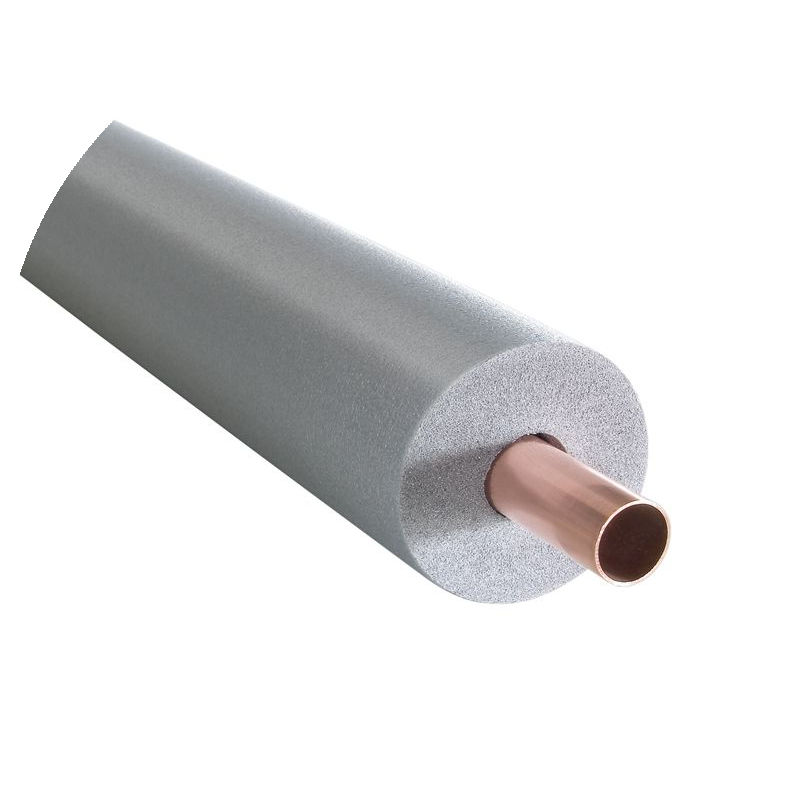
This closed-cell pipe insulation is the most famous in the UK due to the fact it is sold in abundance in places like Screwfix, B&Q, Wickes and other major builders merchants. That being said there are better options out there in terms of thermal insulation and also soundproofing.
If you looking for cheap pipe insulation, then they don't come much cheaper than PE foam. It's a low-cost, energy-efficient, flexible waterproof pipe lagging, manufactured in 2m lengths.
This foam pipe lagging is used in a range of heating and plumbing applications, including insulating central heating pipes and pipes in lofts and attics.
Polyethene foam pipe insulation is easy to install as it is often a hollow foam tube with a slit down one side. This pipe insulation can withstand temperatures of up to 105 degrees Celsius. Therefore it is not to be used on steam pipes or any other very hot application.
Phenolic Foam Lagging: Kingspan Kooltherm
It's the most thermally efficient insulation for pipes that you can get on the market outside of niche products like Aerogel. A low thermal conductivity of 0.025 W/mK is achieved, thanks to its closed-cell construction and foil facing.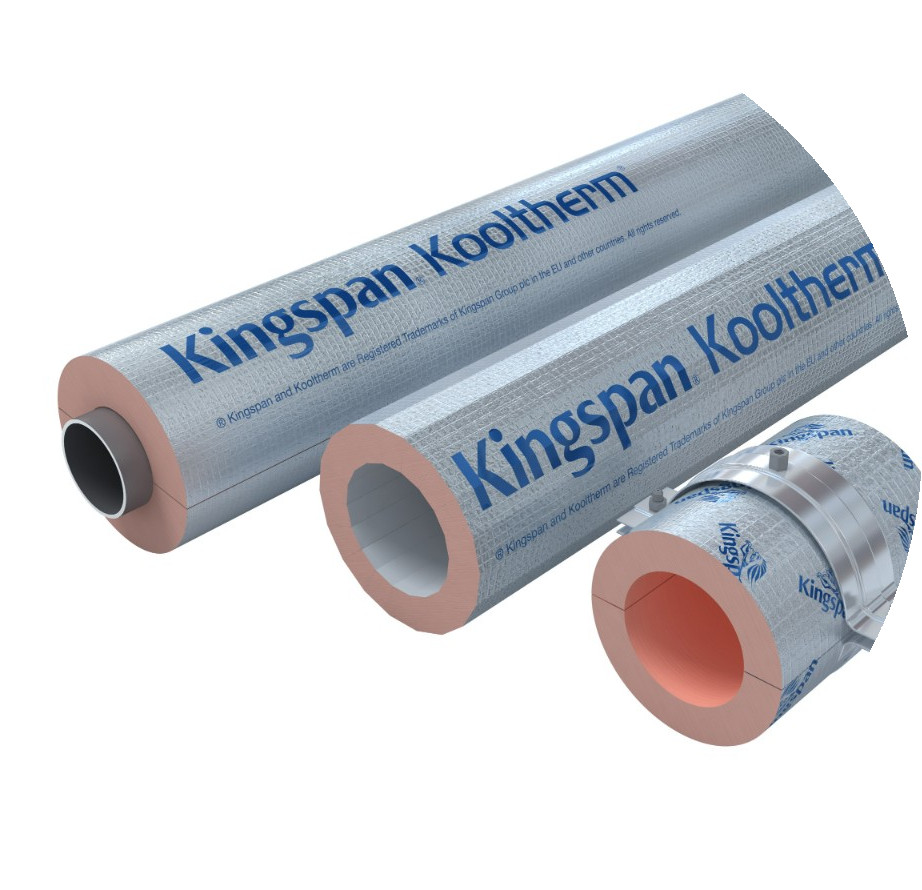
Kingspan Kooltherm pipe section is perfect for insulating almost every type of pipe, including mild steel, stainless steel, carbon steel, copper, and plastic. It is considered the best outdoor pipe insulation to prevent freezing, however, it should be noted that appropriate weatherproof cladding should be utilised to prevent water ingress and degradation of the phenolic foam itself.
Phenolic insulation is also lightweight, easy to install, and offers excellent fire and moisture resistance, making it an ideal choice for a variety of applications and environments.
It is brittle, meaning it will crack and crumble under stress, it is not flexible but if it is used in situations where this will not be an issue, there is no better choice.
It is very cost-effective and is probably the most cost-effective thermal pipe insulation for achieving more stringent heat loss or gain requirements
It is used for a variety of industrial and H&V insulation applications.
Nitrile Rubber: Armacell Armaflex or K-Flex
Nitrile rubber pipe lagging as manufactured by Armaflex and also Kflex, is another very popular, closed-cell type of pipe insulation.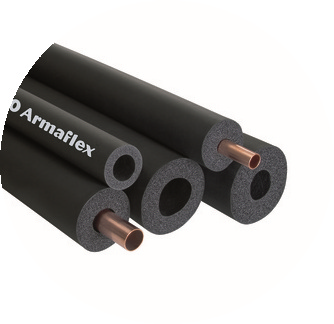
These 2m long, black foam pipe insulation tubes are made from flexible elastomeric nitrile rubber that effectively reduces energy loss and provides continuous condensation protection. We sell self seal, unslit and endless coils her at Buy Insulation Online.
It's cost-effective up to thicknesses of 13mm, thicker than this and you would probably be better off choosing phenolic or mineral wool for a better ROI. It is mould, fungus, and bacteria-resistant so a great choice for use in clean rooms for example. It can also be referred to as black pipe insulation or black rubber pipe lagging.
Nitrile rubber can only withstand temperatures of up to 105°C so it's not suitable for steam pipe lines or being near other very hot surfaces.
Nitrile rubber pipe lagging insulation is available as an unsplit tube, a pre-slit self-sealing tube, or a sheet. It's used to insulate plumbing pipework and Air conditioning system pipework.
Because of its closed cell structure, nitrile rubber is great to be used as outside water pipe insulation. This means that it is effectively waterproof.
If it is used as outdoor pipe insulation, nitrile rubber should ideally be painted with a UV blocker, to prevent the Sun's rays from breaking it down.
It is also great for use as chilled water pipe insulation or chiller pipe insulation. This is because it has a built-in vapour barrier making it great in preventing condensation.
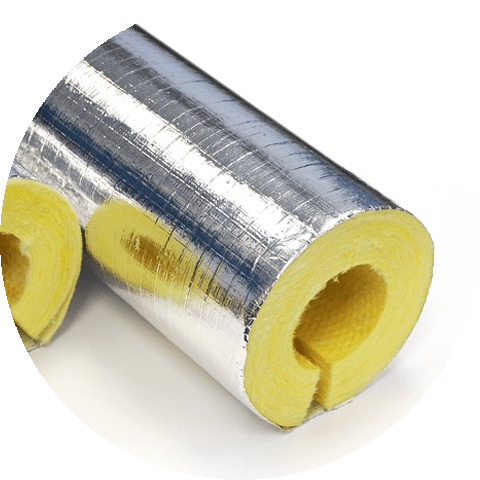
Fibreglass: Isover Climpipe
Manufactured in lengths of 1.2m, this fibreglass pipe insulation can prevent thermal bridging. They're great for insulating heating and hot water pipes. Their uniform density ensures the best possible thermal performance.
Fibreglass has many of the same kind of qualities as mineral wool such as acoustic insulation properties and similar thermal insulation values, although rock wool does edge it in these departments slightly and is vastly superior in terms of fire resistance.
Stone or mineral wool: Rockwool Rocklap
Rockwool pipe sections, more specifically known as Rocklap H&V, come in prefabricated sections with a foil facing and a self-adhesive lap. They are quick and easy to install; just snap the lengths onto the pipe, remove the self-adhesive backing tape, and smooth it down for a secure seal. 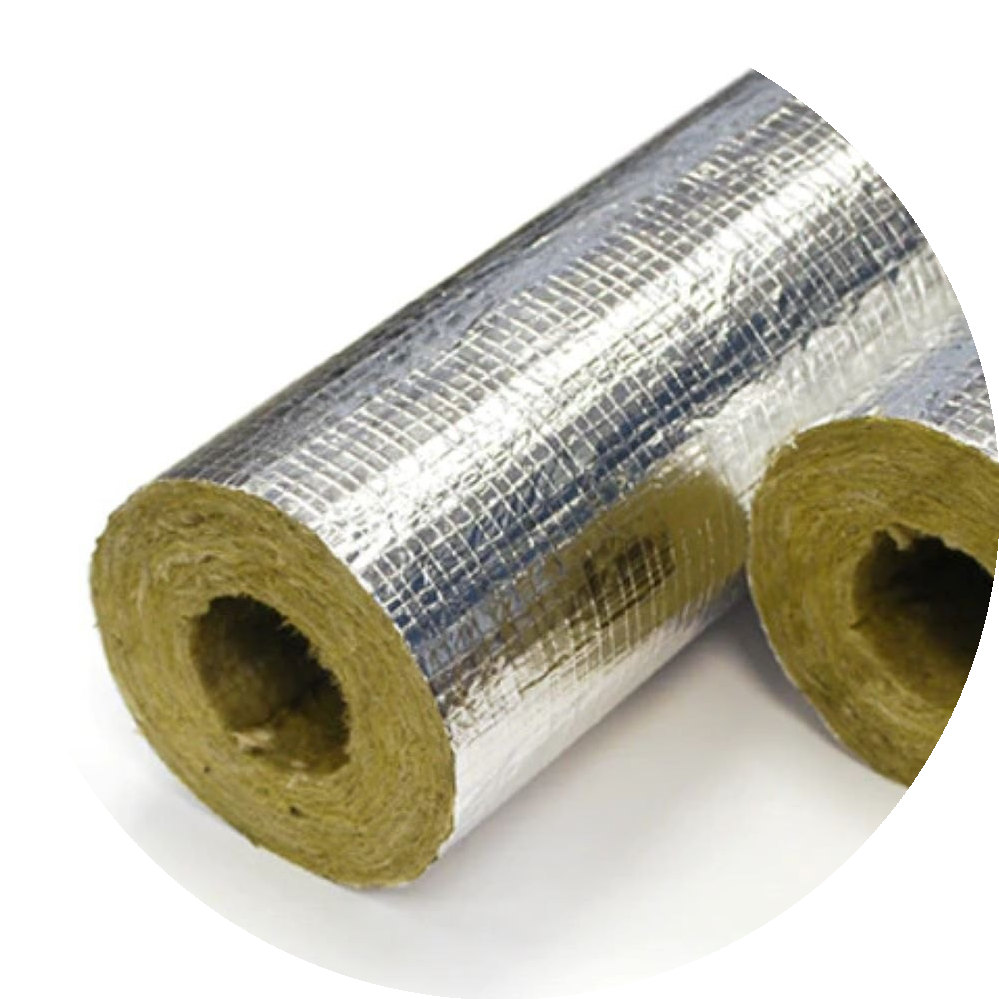
Rockwool can withstand temperatures of up to 700°C so it's the best pipe lagging if fire safety is a key concern.
Made from Stone wool, you can rely on this material to effectively act as a heat-resistant pipe cover, protecting those who may come into contact with the pipe.
Rockwool prevents scalding and burns for workers who come into contact with plant room hot and cold water pipework, such as maintenance workers or contractors.
It's perfect for both HVAC and industrial applications including being used as steam pipe insulation. Its acoustic insulation properties make it great for use as waste pipe soundproofing, to help prevent noise breakout.
Pipe Insulation Misnomers
We hear quite a lot from people who email or call us up asking for pipe insulation using terminology which is not quite right or is not specific enough to progress further without knowing more details. Here are some examples of misnomers:
"I need foam insulation for my pipes." - Foam insulation is a broad term that can refer to many types of insulation, such as Polyethylene and Nitrile. It's important to specify which type of foam insulation is needed. If you do not know please ask our customer support to suggest
"I need heat tape for my pipes." - Heat tape is not insulation, but rather a trace heating element used to prevent frozen pipes. Insulation is still needed to conserve energy and maintain temperature.
Neoprene Pipe Insulation - As far as we are aware there is no such pipe insulation in the world that uses neoprene as its main material. We think this is a conflation of nitrile rubber and neoprene because they kind of look alike.
Armaflex Insulation when used to describe nitrile rubber. It is also called Black foam lagging quite often too
Pipe covers when used to describe pipe insulation. Pipe lagging is different from pipe covers which are used for decorative purposes only on radiator pipes.
Polystyrene Pipe Insulation - Polystyrene is not great for use as pipe insulation, it is also pretty flammable so there are much better options than this. In the UK at least there are no options for its purchase or use whilst adhering to relevant standards.
Key Considerations for Selecting Pipe Insulation Pre-install
When selecting pipe insulation, several factors should be taken into account to ensure the best possible outcome. Consider the following:
- Temperature Range: Determine the temperature range the insulation material can effectively handle. Ensure that it matches the temperature requirements of your application. Some materials may be suitable for high-temperature applications, while others are better suited for low-temperature environments.
- Moisture Resistance: Consider the presence of moisture or high humidity levels in the environment. Choose insulation materials that provide good resistance against moisture to prevent damage and maintain insulation performance. Waterproof pipe insulation or external water pipe insulation (Such as Polyethelene, Nitrile Rubber) may be needed for outdoor or wet environments.
- Fire Resistance: Evaluate the fire safety requirements of your application. Select insulation materials that offer adequate fire resistance and comply with relevant fire safety standards. Rockwool Pipe Lagging can be considered fireproof due to its fantastic resistance to flame and heat and may be appropriate for applications with specific fire safety requirements.
- Application Type: Identify the specific application for which insulation is needed, such as hot water pipes, chilled water systems, or acoustic insulation. Different applications may require different insulation materials or thicknesses. For example, thermal insulation for pipes carrying hot fluids may require materials with higher temperature resistance.
- Longevity and Durability: Assess the expected lifespan and durability of the insulation material. Consider factors like resistance to ageing, degradation, or mechanical damage. Insulation pipe foam or foam pipe covers may provide additional protection and durability.
- Environmental Impact: Take into account the environmental impact of the insulation material. Look for options that are eco-friendly and recyclable to promote sustainability. Consider insulation suppliers near you to reduce transportation emissions and support local businesses.
- Regulatory Compliance: Ensure that the selected insulation material complies with relevant building codes, standards, and regulations. Compliance with industry standards ensures that the insulation meets performance and safety requirements.
- Cost Considerations: Consider the cost-effectiveness of the insulation material, taking into account not only the initial purchase cost but also long-term savings in energy consumption and maintenance. Evaluate the payback period to determine the economic viability of the insulation solution.
- Supplier Reputation: Choose reputable insulation suppliers known for providing high-quality products and reliable customer service. Look for suppliers and manufacturers who offer technical support, warranty options, and a wide range of insulation solutions to meet your specific needs.
- Professional Installation: For complex or large-scale projects, consider engaging professional thermal insulation contractors who have the expertise and experience in pipe insulation installation. Proper installation ensures the insulation's effectiveness and longevity.
Selecting the Right Piping Insulation Thickness
Choosing the appropriate insulation thickness is crucial for maximising energy efficiency and ensuring effective insulation. The required thickness depends on factors such as pipe diameter, fluid temperature, and desired heat loss prevention. An insulation thickness that is too thin may result in heat loss, while excessive thickness can be unnecessary and costly. 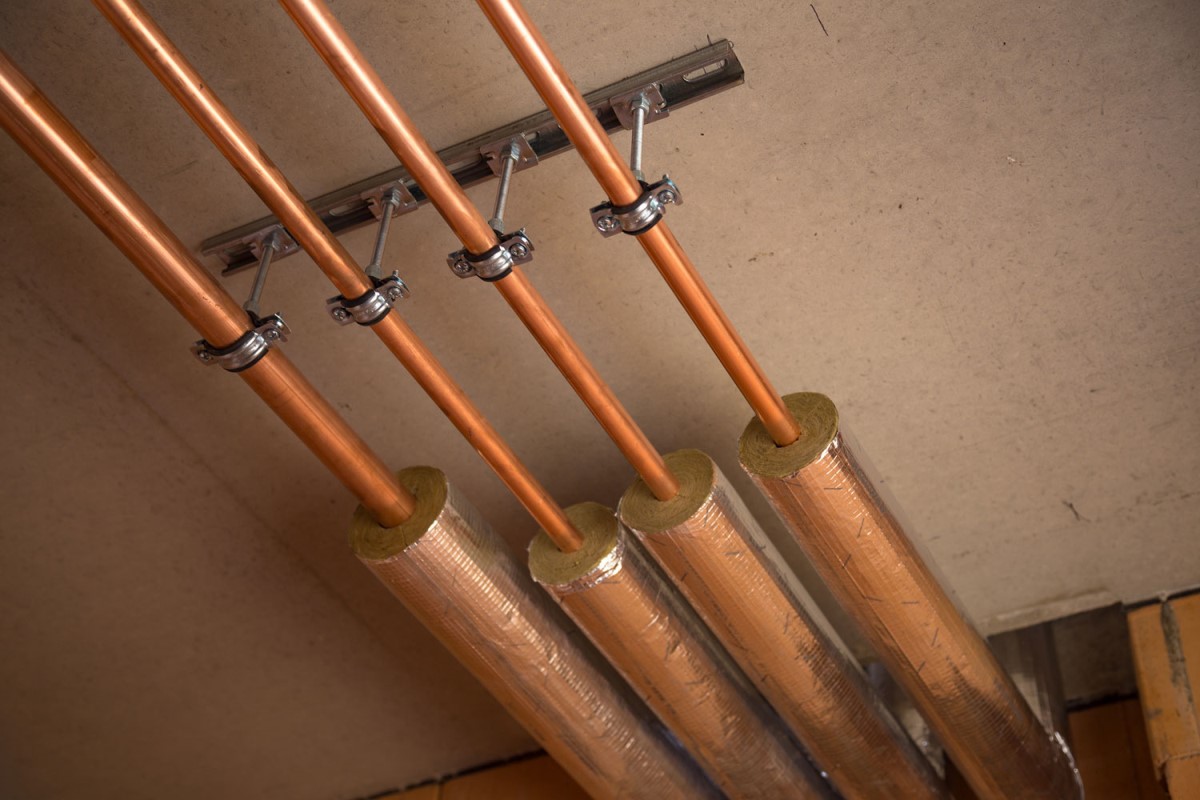
British Standards provide guidelines on the minimum insulation thickness for various applications in their BS5422:2023 code, taking into account factors like building regulations and energy conservation requirements.
We have written a blog article on this very subject here called 10 Things To Consider When Choosing Pipe Insulation Thickness.
It is recommended to consult these standards or seek advice from insulation professionals (like us) to determine the suitable insulation thickness for your specific needs. We can get you professional calculations done by pipe lagging manufacturers if needs be so get in touch via our contact us page which you can find here.
Optimising Thermal Insulation and Performance
The thickness of pipe insulation should be selected based on the desired level of thermal performance and energy efficiency. A thicker layer of insulation will generally provide better heat retention, but factors such as space constraints and budget also need to be considered when choosing the appropriate thickness.
Considering Environmental Conditions and Application
Environmental conditions such as temperature, humidity, and the type of pipe system should be taken into account when determining the insulation thickness. For instance, pipes exposed to extreme cold may require more insulation to prevent freezing, whereas indoor pipes might necessitate a thinner layer.
Ultimately, it would help if you chose the thickness that best meets the specific requirements of your application and surroundings.
Compliance with Building Regulations and Standards
Compliance with building regulations and standards is another critical factor to consider when choosing the thickness of pipe insulation. Local building codes and industry standards often dictate minimum insulation requirements for pipes, providing guidelines for adequate thickness and the type of insulation material that should be used in residential, commercial, and industrial applications.
The Importance of Cold Water Pipe Insulation in Subzero Temperatures
It's an understood fact that water systems need to be fitted in a meticulous and precise manner, regardless of their location. However, this need for precision becomes particularly prominent in regions where the mercury is likely to drop below freezing.
It's in these settings that a professional installer must demonstrate utmost care to ensure water systems are established according to the Water Regulations. Properly following these regulations helps ensure the system's consistent, trouble-free operation irrespective of how cold it gets outside.
The common misconception about insulation is that it can completely prevent freezing in a water system. But it's essential to correct this misbelief - insulation merely delays the inevitable onset of freezing. Its effectiveness is proportionate to its quality and thickness; the superior and thicker the insulation, the longer it can ward off freezing.
Consequently, the most effective safeguard against freezing water systems in buildings is to maintain the internal temperature above the water's freezing point.
A curious phenomenon that has puzzled many is the irregularity in the reaction of pipes to freezing. Why does one frozen pipe burst while another, also frozen, remains intact?
The answer lies in the properties of the material from which the pipes are made. Consider the copper tubing to EN 1057 thin wall, formerly known as Table X. This tubing can endure an expansion of at least 30%. Given that the volume of water increases by just about 10% when frozen, a uniformly frozen copper system would merely swell, not rupture.
In reality, however, localised freezing forms an ice plug. This plug expands until the pressure increment melts the ice's surface at the ice-tube interface. This process is referred to as regelation. It enables the ice plug to move and balance the pressure on either side. But if the plug's movement is obstructed, perhaps by an elbow or terminal fitting, the pressure escalates as the ice plug expands.
Eventually, the hydraulic pressure in the unfrozen water exceeds the bursting pressure of the pipe, leading to a "frost burst". It's important to note that this can occur irrespective of the pipe's material. Thus, once an ice plug forms, it blocks the water supply, making frost precautions necessary.
UK Water Regulations mandate that all water services, excluding warning or overflow pipes, and all water fittings, must be protected against freeze damage as much as reasonably practicable.
In instances where this protective measure takes the form of insulation, BS5422 provides guidance on suitable thicknesses. These are based on the insulation's thermal conductivity and the pipe's nominal outside diameter.
Upon studying BS5422, you'll find that smaller diameter tubes necessitate comparatively thicker insulation than their larger counterparts. This understanding is crucial for correctly installing and maintaining water systems in subzero temperatures. By following these guidelines and precautions, we can maximise the longevity and efficiency of our water systems, even in the harshest of winters.
While installing water systems in freezing conditions, it's crucial to remember that smaller-diameter tubes require relatively thicker insulation compared to larger-diameter pipes. This is because smaller tubes, particularly those carrying cold water, contain comparatively less heat energy, hence they cool down to freezing temperatures more quickly.
Consequently, these smaller diameter tubes necessitate thicker insulation to maintain functionality and therefore should be given enough clearance by the installer using suitable bracketry.
Regulations and Positioning
When it comes to the positioning of services, appliances, and water fittings, the Water Regulations stipulate that pipes and fittings must be installed in locations that minimise the risk of freezing.
Special attention must be paid when installing double-check valves and other devices designed to prevent backflow and back-siphonage. Tubes, valves and fittings prone to freezing must be insulated and capable of being drained.
There are scenarios where insulation is either needed or not. If a tube feeds an outdoor tap, a servicing valve should be fitted. For installations in ventilated roof spaces, insulation equivalent to outdoor standards should be utilised.
Extra care must be taken in specific circumstances such as:
- Pipes near windows, air bricks, and external doors, where drafts are likely.
- Unheated roof spaces and cellars.
- Unheated outbuildings and garages.
- Pipes are in contact with cold surfaces, such as the interior of an external wall.
- Pipes in chases and ducts formed in external walls.
- Locations where the service entry point is less than 750mm away from external walls .
Trace Heating Cable
Insulation is mandatory for water systems installed in unheated buildings or exposed above-ground locations. Moreover, during severe weather conditions, the utilisation of electrical trace heating systems might be necessary to ensure an uninterrupted water supply.
Self-regulating trace heating tape is available, which consists of two electrical conductors separated by a unique compound and enclosed in a plastic covering.
As the temperature drops, the electrical resistance of the separating compound reduces, allowing electricity to flow and heat the tape. This heating subsequently increases the resistance, thereby reducing the electricity flow.
This automatic regulation maintains both the tape and the pipe it protects at the design temperature with minimal electricity usage. The trace heating tape should be fitted between the pipe surface and the pipe insulation wrap.
Waterproof Pipe Lagging
In circumstances where insulation might become wet, such as outdoors or underground, it must be waterproof. Closed-cell pipe insulation foam like polyethene and nitrile rubber are generally considered satisfactory as lagging for external pipes. If insulation absorbs water, it's worse than having no insulation at all! 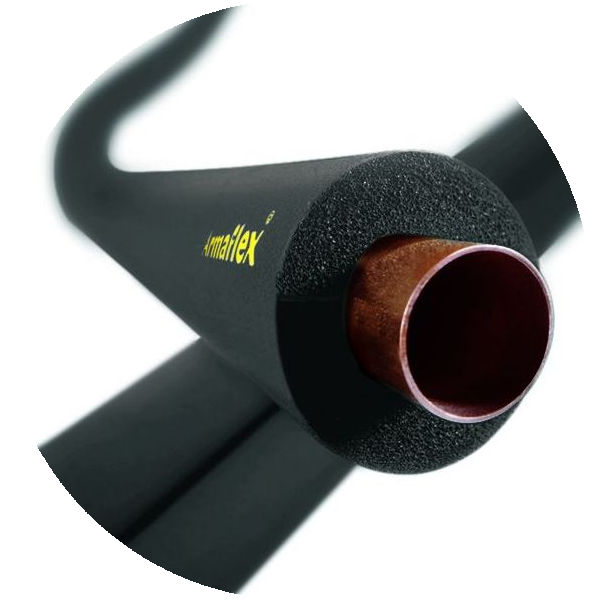
The reason is, that when wet, open cell insulation loses its insulating properties as water fills the tiny pores that trap air. Additionally, since insulation has a larger surface area than the pipe it covers, heat loss is accelerated, leading to rapid cooling.
Therefore it is essential when looking for waterproof external pipe insulation, you should always choose a closed cell type without the use of cladding and use cladding when choosing open cell or fibrous materials.
Preventing Warming of Cold Water Services
The ideal approach to preventing the warming of cold water services is by designing the system so that the runs are kept a reasonable distance away from heat sources such as central heating system pipework.
In cases where cold water services used for domestic purposes need to be installed near heat sources or run through hot environments, such as ducts with hot water or central heating mains, the Water Regulations necessitate insulation against heat gain.
This is to prevent wastage of water by ensuring that water drawn from the taps isn't warm. In addition, in hot and humid environments such as changing rooms and showers, insulating your pipework can also help prevent excessive condensation on cold water services.
Common Pipe Lagging Sizes
The most common imperial sizes people usually ask for are
- 1.5 inch pipe insulation.
- 2 inch pipe insulation
- 2 inch foam pipe insulation
- 4 inch pipe insulation
| Nominal Bore (Metric / NB / DN) | Nominal Bore (Imperial) | Pipe Outside Diameter (Metric) |
| 10mm | 3/8" | 17.2 mm |
| 15mm | 1/2" | 21.3mm |
| 20mm | 3/4" | 26.9mm |
| 25mm | 1" | 33.7mm |
| 32mm | 1 1/4" | 42.4mm |
| 40mm | 1 1/2" | 48.3mm |
| 50mm | 2" | 60.3mm |
| 65mm | 2 1/2" | 76.1mm |
| 80mm | 3" | 88.9mm |
| 100mm | 4" | 114.3mm |
| 125mm | 5" | 139.7mm |
| 150mm | 6" | 168.3mm |
| 175mm | 7" | 193.7mm |
| 200mm | 8" | 219.1mm |
| 225mm | 9" | 244.5mm |
| 250mm | 10" | 273.0mm |
| 300mm | 12" | 323.9mm |
| 350mm | 14" | 355.6mm |
| 400mm | 16" | 406.4mm |
| 450mm | 18" | 457.0mm |
| 500mm | 20" | 508.0mm |
Insulating Your Pipes: Different Methods
We have gone into the details of methods of installing pipe insulation in our blog which you can find in this article by clicking here.
However, we have summarised the process of installing pipe lagging below. 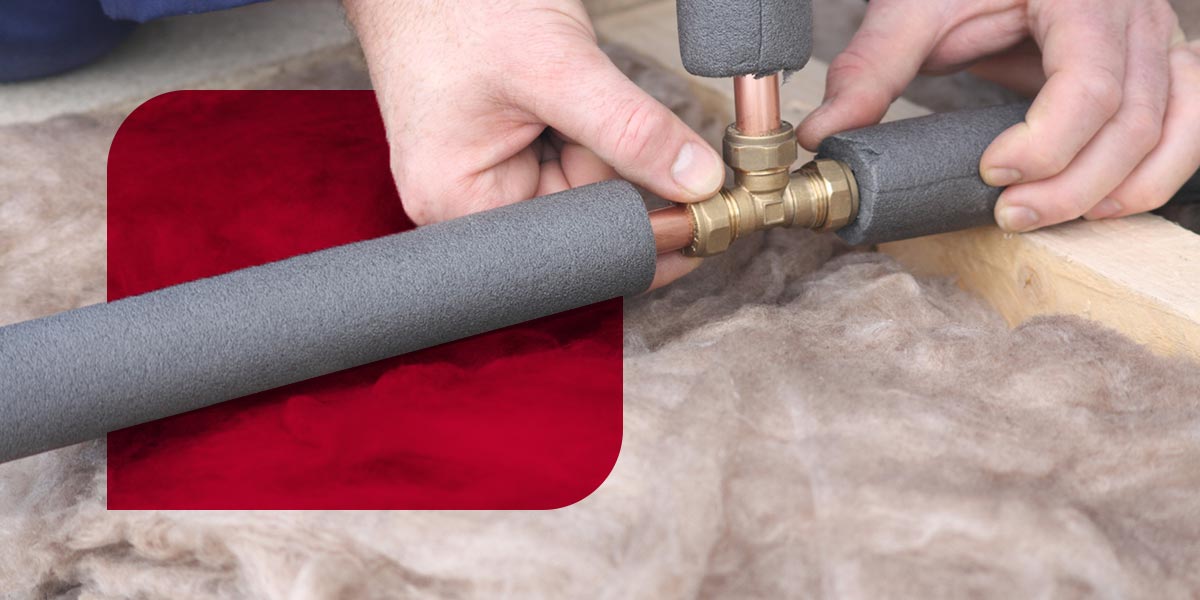
Before you begin, make sure to read and understand the instructions carefully. The first step is to open the hinged insulation section and place it over the pipe. Ensure that there is no dirt, dust, or moisture on the overlap area and that the insulation lines up perfectly.
Then, close the hinged sections, making sure that the adhesive on the jacket does not contact anything while sealing the insulation. After that, carefully pull the release strip from the jacket lap and start to apply pressure from the centre, moving towards the end.
Finally, apply the matching butt strip and seal the exposed end of the pipe with a mastic or vapour barrier if needed. With proper installation, your pipes will be well-insulated for efficient energy use and freeze protection.
Read on for a more in-depth analysis and breakdown of the steps.
Selecting the Right Piping Insulation Thickness
Choosing the appropriate insulation thickness is crucial for maximising energy efficiency and ensuring effective insulation. The required thickness depends on factors such as pipe diameter, fluid temperature, and desired heat loss prevention.
British Standards provide guidelines on the minimum insulation thickness for various applications, taking into account factors like building regulations and energy conservation requirements.
It is recommended to consult these standards or seek advice from insulation professionals to determine the suitable insulation thickness for your specific needs. An insulation thickness that is too thin may result in heat loss, while excessive thickness can be unnecessary and costly.
Optimising Thermal Insulation and Performance
The thickness of pipe insulation should be selected based on the desired level of thermal performance and energy efficiency. A thicker layer of insulation will generally provide better heat retention, but factors such as space constraints and budget also need to be considered when choosing the appropriate thickness.
Considering Environmental Conditions and Application
Environmental conditions such as temperature, humidity, and the type of pipe system should be taken into account when determining the insulation thickness. For instance, insulation for outdoor pipes exposed to extreme cold usually requires thicker to prevent freezing, whereas indoor pipes might only need a thinner layer depending on whether the space is heated or not.
Ultimately, you should choose the thickness that best meets the specific requirements of your application and surroundings.
Compliance with Building Regulations and Standards
Compliance with building regulations and standards is another critical factor to consider when choosing the thickness when insulating your pipes. Local building codes and industry standards often dictate minimum insulation requirements for pipes, providing guidelines for adequate thickness and the type of insulation material that should be used in residential, commercial, and industrial applications.
Key Considerations for Selecting Pipe Insulation
When selecting pipe insulation, several factors should be taken into account to ensure the best possible outcome. Consider the following:
-
Temperature Range: Determine the temperature range the insulation material can effectively handle. Ensure that it matches the temperature requirements of your application. Some materials may be suitable for high-temperature applications, while others are better suited for low-temperature environments.
-
Moisture Resistance: Consider the presence of moisture or high humidity levels in the environment. Choose insulation materials that provide good resistance against moisture to prevent damage and maintain insulation performance. Waterproof pipe insulation or external water pipe insulation (Such as Polyethelene, Nitrile Rubber) may be needed for outdoor or wet environments.
-
Fire Resistance: Evaluate the fire safety requirements of your application. Select insulation materials that offer adequate fire resistance and comply with relevant fire safety standards. Rockwool Pipe Lagging can be considered Fireproof pipe insulation due to its fantastic resistance to flame and heat and may be appropriate for applications with specific fire safety requirements.
-
Application Type: Identify the specific application for which insulation is needed, such as hot water pipes, chilled water systems, or acoustic insulation. Different applications may require different insulation materials or thicknesses. For example, thermal insulation for pipes carrying hot fluids may require materials with higher temperature resistance.
-
Longevity and Durability: Assess the expected lifespan and durability of the insulation material. Consider factors like resistance to ageing, degradation, or mechanical damage. Insulation pipe foam or foam pipe covers may provide additional protection and durability.
-
Environmental Impact: Take into account the environmental impact of the insulation material. Look for options that are eco-friendly and recyclable to promote sustainability. Consider insulation suppliers near you to reduce transportation emissions and support local businesses.
-
Regulatory Compliance: Ensure that the selected insulation material complies with relevant building codes, standards, and regulations. Compliance with industry standards ensures that the insulation meets performance and safety requirements.
-
Cost Considerations: Consider the cost-effectiveness of the insulation material, taking into account not only the initial purchase cost but also long-term savings in energy consumption and maintenance. Evaluate the payback period to determine the economic viability of the insulation solution.
-
Supplier Reputation: Choose reputable insulation suppliers known for providing high-quality products and reliable customer service. Look for suppliers and manufacturers who offer technical support, warranty options, and a wide range of insulation solutions to meet your specific needs.
-
Professional Installation: For complex or large-scale projects, consider engaging professional insulation contractors who have the expertise and experience in pipe insulation installation. Proper installation ensures the insulation's effectiveness and longevity.
How to Install Pipe Insulation
Proper installation of pipe insulation is essential to achieve the desired results. Here are the general steps involved in the installation process: 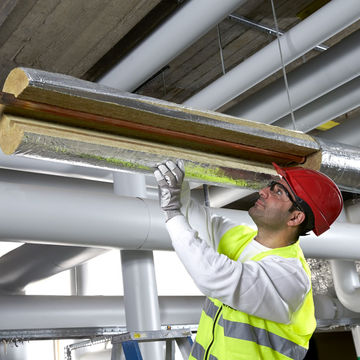
-
Prepare the Pipes: Ensure that the pipes are clean, dry, and free from any debris or contaminants before beginning the installation. Clean the surface of the pipes to ensure proper adhesion of the insulation material.
-
Measure and Cut: Measure the length of the pipe to determine the required length of insulation material. Use a sharp knife or a specialised insulation cutter to cut the material to the appropriate size. Ensure accurate measurements to achieve a tight and secure fit.
-
Apply Adhesive: If necessary, apply adhesive to the insulation material to secure it to the pipe. This step helps to prevent movement or slippage of the insulation once installed. Follow the manufacturer's instructions for proper adhesive application.
-
Fit the Insulation: Wrap the insulation material around the pipe, ensuring a snug and secure fit. Press the edges together firmly to eliminate gaps and maintain insulation integrity. For curved or irregularly shaped pipes, consider using pre-formed insulation tubes for better coverage.
-
Seal the Joints: A critical part of pipe insulation is joint sealing, which helps to prevent heat loss, air infiltration and moisture buildup. Properly seal any joints, seams, or overlaps to ensure an airtight insulation barrier. This step helps to further enhance energy efficiency. Use adhesive tape or specialised sealing products designed for pipe insulation to create a seamless and tight seal.
90-degree bends and Tees
To tackle 90-degree bends on pipework, simply cut the pipe insulation at 45 degrees on both sides of the bend. They'll then link together, tightly and securely, using insulation tapes such as aluminium foil.
To address T-join in your pipes, just cut a 45 degrees notch in the pipe at the top of the "T" and then shape the end of the connecting insulation to fit. Carefully wrap tape on all joints and connections.
If you must join two pieces of pipe insulation, do so using duct tape or foil tape, in case of foil-faced pipe insulation.
Just ensure that the joints are closed as much as possible with no gaps and that the two pieces of insulation are firmly forced together before taping. You can buy Armaflex pipe insulation adhesive to help with the installation too.
Finishing
After the insulation has been applied and joint sealing is complete, it’s time to move on to the finishing touches. This will likely include adding a protective coating or jacketing over the insulation to further protect it from damage or wear and tear.
For external or outdoor applications, it is important to protect the insulation from weather conditions, UV exposure, or physical damage. This can be achieved through the use of weather-resistant cladding and protective covers.
There are a variety of materials that can be used for jacketing, including;
- Aluminium Pipe Cladding
- Stainless steel
- Aluzinc Pipe Cladding
- PVC or Isogenopak Pipe Insulation Cladding
- Polyisobutylene (PIB) Rubber Pipe Lagging Weatherproofing membrane
- 5 Ply Aluminium Laminate or Ventureclad
The type of material chosen will depend on factors such as the environment and exposure the insulation will be subjected to. It’s important to ensure that the jacketing is properly installed and secured to ensure maximum effectiveness.
Once the insulation and jacketing are in place, it’s important to conduct a thorough inspection to ensure everything has been applied correctly and there are no gaps or areas where the insulation has been compromised. With proper finishing, your insulated pipes will be well-protected and ready to perform efficiently for years to come.
Consider Vapour Barriers
In applications where moisture control is critical, such as chilled water systems or cold water pipes, using pipe lagging with vapour barriers is essential. Vapour barriers help to prevent condensation and moisture ingress, ensuring the insulation's effectiveness and longevity.
Insulate Valves and Fittings
Don't forget to insulate valves, fittings, and other components in the piping system. These areas are prone to heat loss and should be properly insulated to maintain overall system efficiency. You can use Thermal Insulation Jackets as an easy way to insulate your valves and flanges.
Regular Maintenance: Regularly inspect the insulation system for any signs of damage, wear, or degradation. Replace damaged insulation promptly to maintain its effectiveness. Monitor for any changes in system performance or energy consumption that may indicate insulation issues.
Additional benefits of pipe insulation
Pipe Lagging helps in Condensation control
In order to control condensation, it is important to insulate your pipes using the proper thickness. The correct thickness will keep the temperature of the surface above the dew point. However, some types of pipe insulation are porous and can let water vapour pass through.
This will cause water vapour to condense on the surface of the pipe and will result in energy losses. To prevent this, you can install a vapour retarder.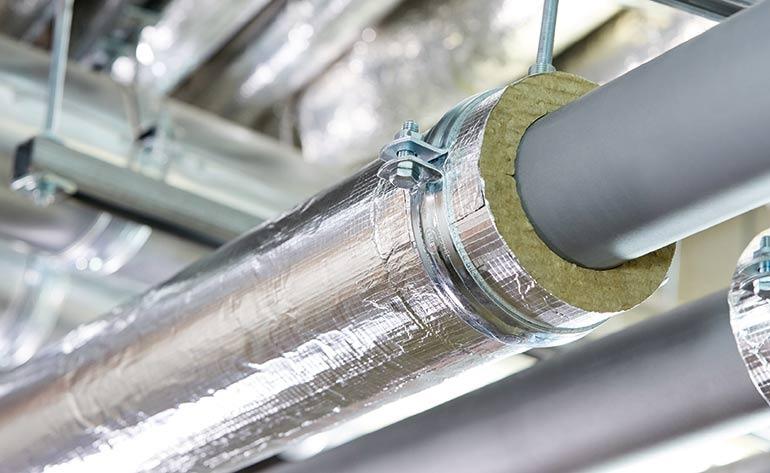
Condensation can be a problem in plant rooms. Because pipes and ducts for industrial processes often operate at below ambient temperature, condensation may occur.
This can mean water droplets get trapped between the insulation and the pipe and cause corrosion under it on steel pipework, also known as CUI or corrosion under insulation.
If the pipes you use have low temperatures, closed-cell pipe lagging with a vapour barrier can eliminate this problem.
For example, the best insulation for refrigerant piping systems which run at low temperatures is a closed-cell foam, like nitrile rubber.
The first step to condensation control with pipe insulation is identifying the source of the problem. A failure in the vapour barrier can allow moisture to penetrate beneath the insulation and condense on the pipe. Therefore it's essential to protect the vapour barrier from damage in high-traffic areas which are susceptible to knocks and scrapes to maintain the vapour barrier.
Pipe Insulation Can Protect People
Pipe insulation plays an important part in building safety. It can stop the transfer of heat and cold from pipes to an operatives' skin, thus helping to protect people from the dangers of freezing or scalding.
In addition, pipe lagging can reduce noise levels and prevent slip, trip and fire hazards.
Pipe insulation is an important component in an industrial plant to provide a safe working environment. It helps to reduce the risk of burns and other injuries due to exposed pipework, pools of condensation forming on the floor and it is also an essential component of system downtime prevention.
Pipe insulation is applied to all pipework in a plant room and is usually shielded from damage with proper pipe cladding.
Insulating Pipes Improves Comfort by lowering heat loss
A pipe insulation's main function is to maintain the temperature of its contents at the optimum for which it is intended.
For example, the pipes for central heating need to be kept warm and the pipes for the air conditioning need to be kept cool. The goal of pipe lagging is to stop this flow of energy, in the form of heat being lost or gain.
Copper pipes lose all of their heat through their surface. Your energy costs will increase as a result (we'll discuss this in a moment) and your radiators will take longer to heat up and cooler to cool down, as will the pipes that feed hot water to showers and faucets.
During the winter, this is especially noticeable since radiators and showers take longer to reach the desired temperatures. This is not ideal for example when you have just got back home from a long day at work and the house is freezing cold.
Pipework Insulation Lowers Energy Costs
Correctly insulated pipework will reduce the amount of heat lost through the pipes. To maintain a comfortable temperature in your house, your radiators will need to work less.
By doing this, you will be able to reduce your monthly energy costs.
It is possible to prevent heat loss from pipes or, at the very least, lower its impact so that it is not as noticeable.
Insulating Pipes can Lower your carbon footprint.
If you have properly insulated the pipes, you will not need to use as much energy to heat or cool the water that flows from your pipes.
By making use of a low-cost pipe lagging system, you will in turn be producing less carbon dioxide, which will then impact less negatively on the environment.
This is much better for the planet and throughout its lifetime, insulation is one product that will avoid more carbon from being released than was released throughout its manufacture, which is not the case for most building materials.
Go thicker with your insulation to help you reduce your impact even more.
Pipe Lagging can avoid frozen pipes
Pipework in external or unheated areas is prone to frost.
If temperatures reach 0 degrees Celsius in these locations and cool the pipes to a point where it freezes, which is specifically true for cold water pipes which are already going to be really cold at this time of year, then the frozen water within the pipework will expand.
In very cold weather, pipes can freeze and then thaw many times during the year. This can stress copper or plastic pipes to a point where they have been compromised, causing them to burst.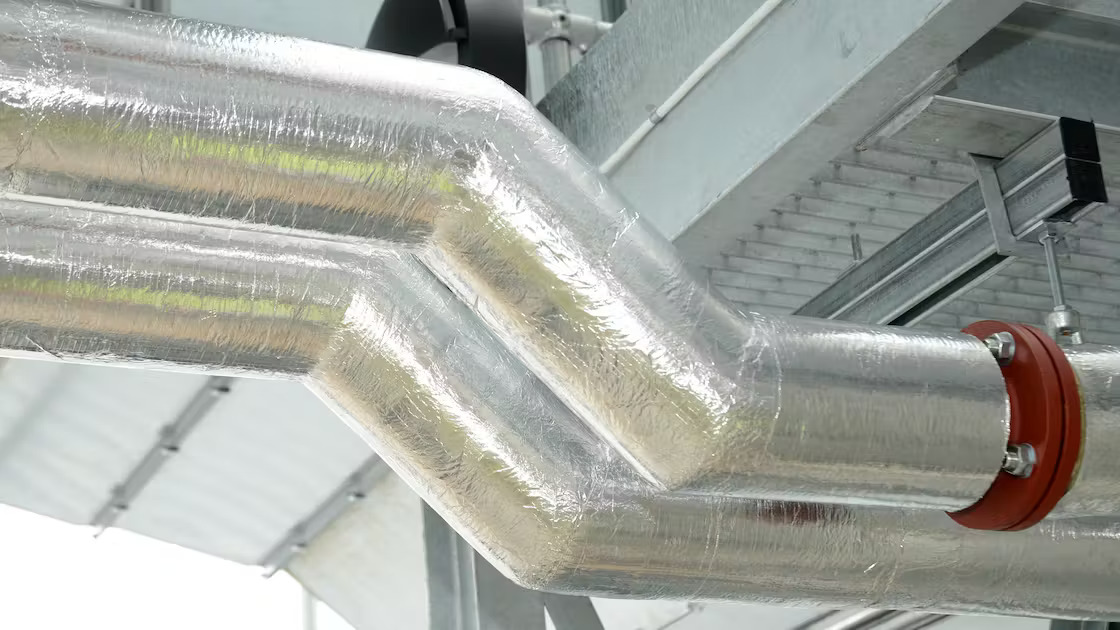
As soon as the water pipes have actually defrosted, water will then continue to stream through the rupture. Now that is a very big problem because the water will be leaking out into your living areas and into your bedrooms etc.
There is a big chance that the water pipes in your home will burst when you are asleep. It is very possible that you are away for a day or two and when you return, the water pipes are flooding your home.
Damages might run into 10s of thousands of £ or $. There will be lots of tidying up and the possibility of having to stay in a hotel or at a relative's until your house is habitable once again.
It is not always a big leak that causes a torrent of water to flood your home. It can happen to anyone! The weakest point of any pipework system is on the fittings such as a tee or elbow piece.
It is possible that the pipes will not burst completely, but rather cause the pipework to burst partially.
At first, it won't appear but, provided sufficient time, the leak will soak the area around it and eventually show itself in the form of a damp patch on the wall or ceiling.
After this happens, it will be very difficult for you to understand where the leak is because it will take time for you to discover it and then repair it.
It may travel underneath the joists of your house, and end up being far away from the pipes.
Even if the leak is actually fixed, it might take months for the damp area to dry out completely. Mould can cause a nightmare for you to remove because once it takes hold, its difficult to eradicate.
Insulating pipes can prevent leaking pipes and causing other issues.
Pipe insulation is an important part of any building's pipework. It helps to avoid pipes becoming corroded and it prevents them from being damaged, which can be really costly to repair or change. It prevents the pipes from leaking and causing rust and deterioration.
Some pipe works are strong enough that they can endure a little damage that would have caused the pipes to burst if the impact was made directly onto the pipe.
But there are times when you need to cover the pipe insulation with metal cladding or a flexible PVC material like Isogenopak to prevent it from being damaged.
Insulation for pipes can prevent damage to their surroundings
When you buy pipe insulation, it should usually have a layer of insulation around it which serves as a vapour barrier to stop water and moisture from getting through it and cause condensation to form on the pipes.
Condensation in pipes can cause a variety of problems, including water contamination, mould growth and water-borne illness, and even damage to the structure.
Insulation of exposed pipes is an efficient way to avoid pipes sweating and problems with humidity.
Some conditions cause the pipes to become brittle and eventually rupture.
Condensation can lead to structural damage, as the condensation can mean water dripping off the water pipes onto neighbouring surface areas.
When the weight of the water-soaked surface area is compromised, it can cause big problems, leading to things like ceilings falling through.
Taking steps to stop condensation on pipes is important for the safety of your pipes and to make them as tough as possible.
Insulated pipes can help prevent the water-borne Legionnaires disease.
We will discuss this more in detail in an article that we have created focusing exclusively on this topic, which you can find here.
If you keep your hot water heater at an acceptable temperature, the bacteria that cause Legionnaires disease can not grow and exist in the pipework.
Insulation of pipes will help you extend the life of your heating system.
Use pipe insulation to prolong the life of your heating system.
By insulating your water pipes, you are actually extending the life of your heating system. This will be because if there is less heat loss from pipes, you will require less energy to heat up your house.
The benefits of this are that your boiler will be able to run more efficiently and the temperature will be set lower than normal.
This means that your heating system will continue to function for a longer time before it needs to be changed or a new boiler installed.
Pipe Lagging can act as Acoustic Insulation.
Insulated pipes can help you save money by reducing heat loss from your heating system, as well as minimizing noise and vibrations.
Since water constantly moves within the pipe, any vibrations that happen as a result of this can cause unpleasant sounds to occur. These sounds can happen when air is trapped in pipes, causing them to be very loud.
 If there is not enough insulation in places where pipes pass through walls, this can cause unpleasant noises to be made.
If there is not enough insulation in places where pipes pass through walls, this can cause unpleasant noises to be made.
These products contain a combination of insulation materials that will work as a barrier against sound.
Acoustically insulating pipes with Rockwool Pipe Insulation or Isover Pipe Insulation can effectively reduce the noise that pipes make.
Nitrile rubber, like what you see on pipes, which is commonly utilized for pipes insulation, works very well too.
There are some special pipe insulation materials that are ideal for drainage pipes for example, such as the ones that can be found here.
It's made of dense foam or rubber which has mineral wool bonded or glued to it, which acts as a sound barrier.
It is used to acoustically seal drainage and soil pipes.
One of the key factors in noise reduction is the location of the noise source. Acoustic pipe insulation that is installed close to the noise source is more effective than insulation installed at a distance.
The design of the facility is also critical in noise reduction. Additional requirements on the materials used in pipe insulation can affect the environmental footprint of a facility.
Also, limited space can make it difficult to install a thick insulation system. These factors can make noise reduction from pipe insulation in industrial settings difficult sometimes.
There may be a need to reduce noise levels in such places, but there may be other ways to improve the effectiveness of pipe insulation. For example, installing simple ductwork around equipment can reduce sound transmission if specialist acoustic pipe insulation is out of budget.
Noise reduction from pipe insulation is achieved by using multiple methods, starting with identifying the source of the noise.
Then, noise mitigation measures such as noise barriers, acoustic walls and ceilings, and other building systems can help reduce noise levels.
Helps to prevent the spread of fire.
In order to ensure the security of buildings and their occupants, many types of pipe insulation can be used to help withstand fire. Most modern pipe insulation is classified as being classified as 0 rated, meaning that they are able to resist the spread of fire over its surface.
There are several types of fireproof pipe insulation that are aimed at preventing fires and smoke from entering homes and buildings. These pipe insulation systems are usually utilised on water pipes, gas lines, and drain pipes.
It's essential that you choose the right kind of insulation for each application to ensure that your pipes are protected against fire.
It's essential that fire rated pipe insulation be installed by a qualified company to ensure it's installed correctly so it can do its job in the event of a fire.
If in doubt, please ask us and we will help you choose an appropriately qualified company, or you can consult TICA to find an accredited company.
What pipe lagging material can I use as external water pipe insulation?
Most pipe insulation in general if it is to be used as lagging for outside pipes must be weatherproofed with an appropriate type of cladding such as PIB or Aluminium Metal Cladding.
However, the foam pipe insulation products that you can buy such as nitrile rubber and polyethene will provide thermal insulation without the specific requirement for cladding to be used too. This waterproof pipe insulation is your best bet for outside pipes.
The reason is due to the structure of these foam pipe insulation sections which are what's called a closed cell.
When pipe lagging is closed cell this means that water cannot penetrate between the microscopic cells of the insulation, unlike open cell insulation like polystyrene which can allow moisture and water through.
However, you still need to take care the foam pipe insulation is not damaged and also that it is coated with an appropriate UV anti-degradation paint to prevent the structure of the pipe lagging from breaking down.
Also, it is best practice to install cladding or weatherproofing around foam pipe insulation as well. If you need help with external pipe lagging we suggest you contact a thermal insulation contractor who can help with this kind of project.
Pipes Which Are Prone To Freezing: The Solution
Why do pipes become frozen?
Pipes, even when not in active use, contain a small amount of residual water. During the colder seasons, this water has the potential to freeze. The frozen water within the pipes expands, generating internal pressure. Whether the pipe can withstand this pressure without bursting depends on the quantity of frozen water, the pipe's shape, type, and whether the pipe is already subjected to corrosion.
There's a common misperception that insulation can fully prevent freezing in a water system. However, insulation merely delays the onset of freezing, its effectiveness linked to its quality and thickness. Therefore, maintaining internal temperatures above freezing point is the best defence against freezing in water systems.
In the context of freezing, not all pipes react the same way. Some frozen pipes burst while others stay intact, which depends on the material properties of the pipes. For example, thin wall copper tubing can tolerate a 30% expansion. But issues arise when localised freezing forms an ice plug that, if obstructed, can lead to a 'frost burst'.
Impact of frozen pipes
Frozen pipes can significantly inconvenience your home, halting normal activities. Water flow is compromised, meaning no water for showers, cooking or heating your home. Even worse, pipe freezing can escalate to a far costlier problem – pipe bursts. Repairing a burst pipe can cost between £5,000 and £10,000.
When the water in the pipes freezes, expands, and causes the pipe to rupture, water can spill everywhere, causing damage to ceilings, floors, electrical systems, and furniture. Sentimental items may be lost forever like family photos for example.
How To Stop Pipes From Freezing
Use Suitable Thickness of Thermal Lagging
BS5422 offers guidance on the suitable insulation thickness based on thermal conductivity and the pipe's outside diameter. Smaller diameter tubes require thicker insulation than larger ones. Hence, following these guidelines is key to maintaining the efficiency of water systems in freezing temperatures.
Installation of a Space Heater
If certain areas in your house, where water pipes are located, are more prone to freezing, consider installing a space heater. This added heat source will warm up the air around the pipework and can prevent your pipes from succumbing to the cold. Be sure to plug the heater directly into a wall socket rather than an extension cord to minimise the risk of electrical fires.
Install Trace Heating Cables
For extreme weather conditions, the use of trace heating tape might be necessary to maintain a consistent water supply. Self-regulating trace heating tape is an option, which includes two electrical conductors divided by a unique compound and sealed within a plastic cover.
When the temperature decreases, the electrical resistance of the separating compound lessens, enabling electricity to circulate and heat the tape. This heat subsequently enhances the resistance, thereby lowering the electrical flow. This self-regulation sustains the temperature of both the tape and the protected pipe at the design level with minimal electricity usage. The trace heating tape should be placed between the pipe surface and its insulation.
Running Water
Keeping your taps slightly open only during the worst weather periods, to allow a drip can prevent your pipes from freezing. Since moving water is less likely to freeze quickly, allowing a slow flow can maintain a liquid state inside the pipes. This also reduces the pressure build-up in the pipes, preventing them from bursting.
Sealing Pipe Cracks
Even minor cracks can allow cold air to penetrate your pipe, which can lead to freezing. To avoid this, it's important to promptly identify and seal any leaks in your water pipes.
What To Do if your Pipes have frozen
Identifying frozen pipes
If you suspect your pipes may be frozen due to lack of water flow and you're confident there are no local water supply disruptions, it's time to investigate and attempt to thaw the frozen pipe.
Thawing frozen pipes
Turn on all your taps to help identify which pipes are frozen. If it's just one pipe, it might be something you can handle. However, if multiple pipes are frozen, it's advisable to seek professional assistance.
To assist in thawing, allow warm air to circulate the room by opening all cupboard doors and latches. You can also attempt to directly heat an exposed frozen pipe. Feel along the pipe to locate the frozen section, then slowly warm the pipe using a hairdryer or a warm towel wrapped around the frozen part. Remember not to use a direct flame or blow torch as this might melt the pipe.
What should be done in case the pipework insulation gets wet?
If pipework insulation gets wet, it is important to take prompt action to prevent further damage and potential issues. Here are some steps you can take:
1. Identify the source of moisture: Determine where the water is coming from and address any leaks or sources of condensation that may be causing the insulation to get wet.
2. Dry the affected area: Use absorbent materials such as towels or cloths to soak up any standing water. You can also use fans or dehumidifiers to aid in drying out the area.
3. Inspect for damage: Check the condition of the insulation for any signs of deterioration, mould growth, or sagging due to water absorption. Wet insulation may lose its insulating properties and become less effective.
4. Replace damaged insulation: If you find that the insulation has been significantly affected by moisture, it is advisable to replace it with new, dry insulation material. This will help maintain energy efficiency and prevent further issues such as mould growth.
5. Address underlying causes: Take necessary steps to fix any leaks or sources of moisture that caused the initial problem in order to prevent future instances of wet pipework insulation.
Remember, if you're unsure about how best to handle a situation involving wet pipework insulation, it's always a good idea to consult with a professional plumber or heating engineer who will have experience dealing with these types of issues safely and effectively.
Industrial and Commercial Pipe Insulation: Why it shouldnt be neglected.
There are a number of benefits of industrial and commercial pipe insulation, and these include energy efficiency, condensation control, noise reduction, and worker safety.
Here we will look at a few of the most common ones. These benefits are very important to businesses, and they should be considered when determining the type of pipe insulation you should use.
Increases Energy efficiency: Reduces costs and Carbon Emissions
In many cases, choosing the correct pipe insulation is critical for increasing energy efficiency.
In addition to the obvious benefits of reducing energy costs, pipe insulation also helps minimize heat transfer and increases a company’s bottom line.
The key to energy efficiency in the industrial sector lies in finding viable solutions.
By choosing the right pipe insulation for industrial purposes, companies can improve energy efficiency while reducing costs and emissions.
Pipe insulation is important for industrial applications because it reduces noise and abrasion. It can also protect equipment from fire. The acoustic properties of pipe insulation help to reduce high-frequency vibrations that can cause damage to equipment and loosen screws and the like over time.
The insulating material also prevents condensation and helps protect industrial appliances from extreme temperatures. In addition, the use of district heating systems is increasing in major metropolitan areas.This is boosting the growth of the industrial pipe insulation market. District heating systems provide heat and water to homes and commercial buildings.
The use of these systems is increasing energy efficiency, which leads to an increase in demand for large pipe insulation. As a result, the market for pipe lagging is expected to grow significantly over the next decade or so. Using proper insulation in industrial applications can help industrial operations reduce energy costs while improving worker safety.
When piping systems require refrigerants, you should use closed-cell pipe insulation. This type is rigid or flexible and varies in thermal k-value but usually comes as split pipe insulation or sheets. It also comes with an inherent vapour barrier built in.
It also improves process efficiencies. Using the right pipe insulation will ensure that the temperature inside the industrial facility is not too high or too low.It will protect equipment, personnel, and processes, and will reduce manufacturing costs and energy costs.
Investing in industrial pipe insulation is an excellent investment in your company’s future. By investing in proper pipe insulation, you will reduce your operating costs and reduce your carbon footprint.
Conclusion
At Buy Insulation Online, our comprehensive range includes rubber pipe lagging, foam pipe insulation, foil-faced pipe insulation and much more.
Our stock products are designed to make installation easier and provide the highest levels of thermal efficiency. We offer a wide variety of sizes and thicknesses to fit any project or need. Whether you’re insulating domestic or commercial piping systems, you can find the right solution for your needs at Buy Insulation Online.
We understand that when it comes to pipe insulation, every project is different so we strive to provide our customers with tailored solutions that meet their specific requirements. We work closely with customers to identify their needs and design an effective solution for them. All our products come with detailed installation instructions for a hassle-free installation process.
Whatever your requirements may be, Buy Insulation Online has got you covered!












